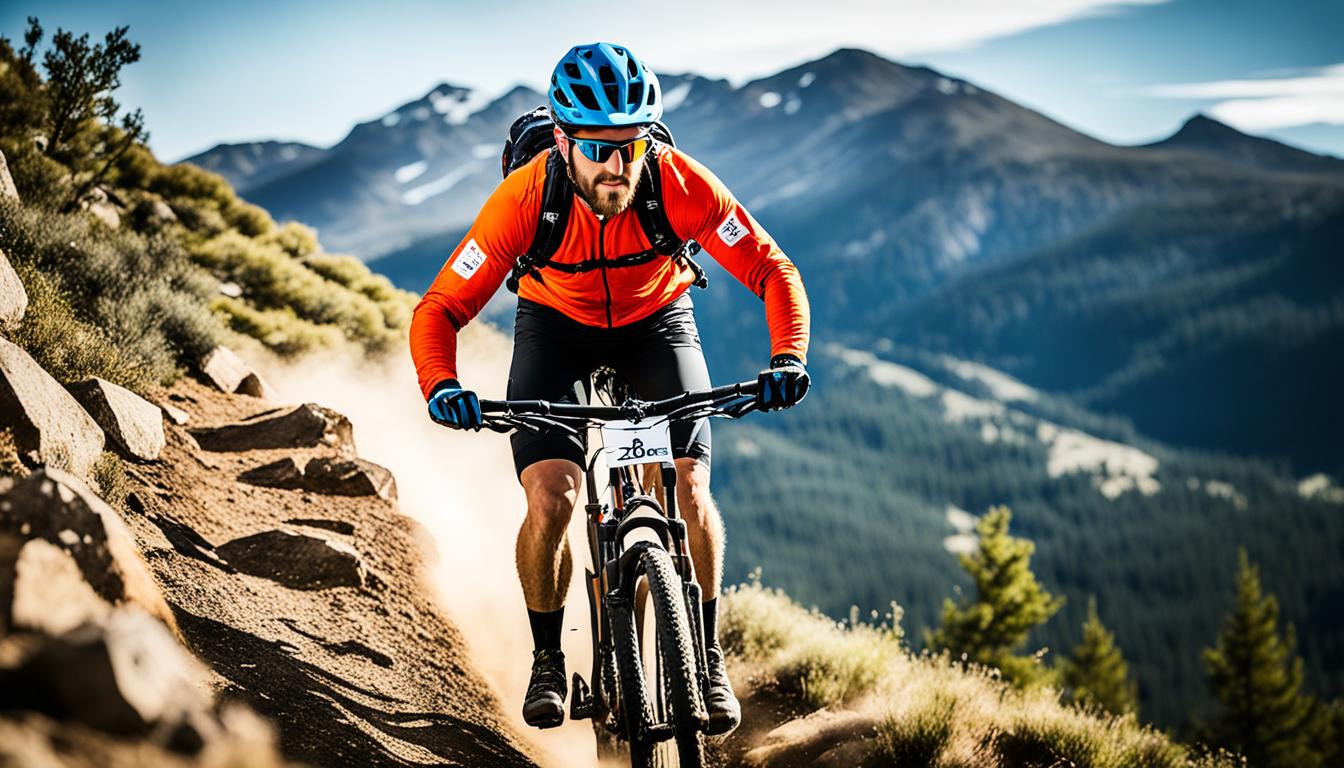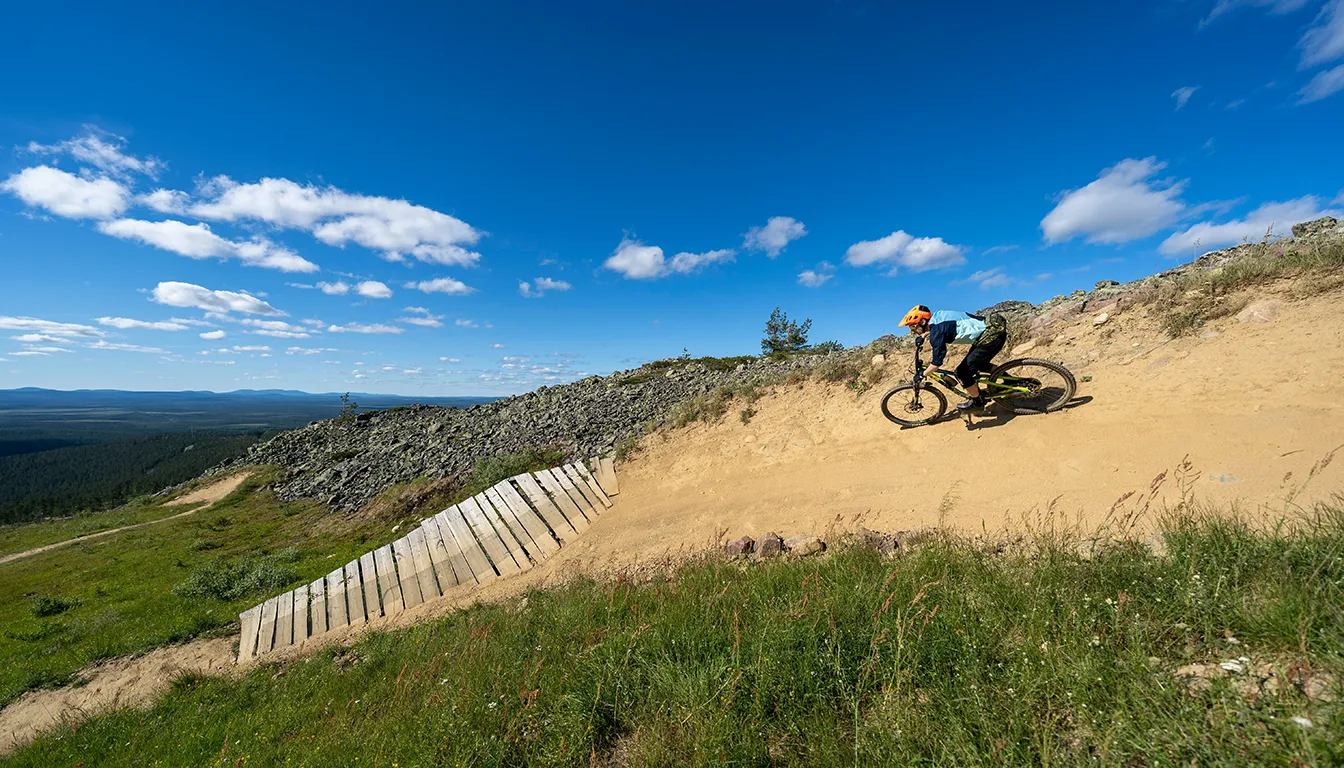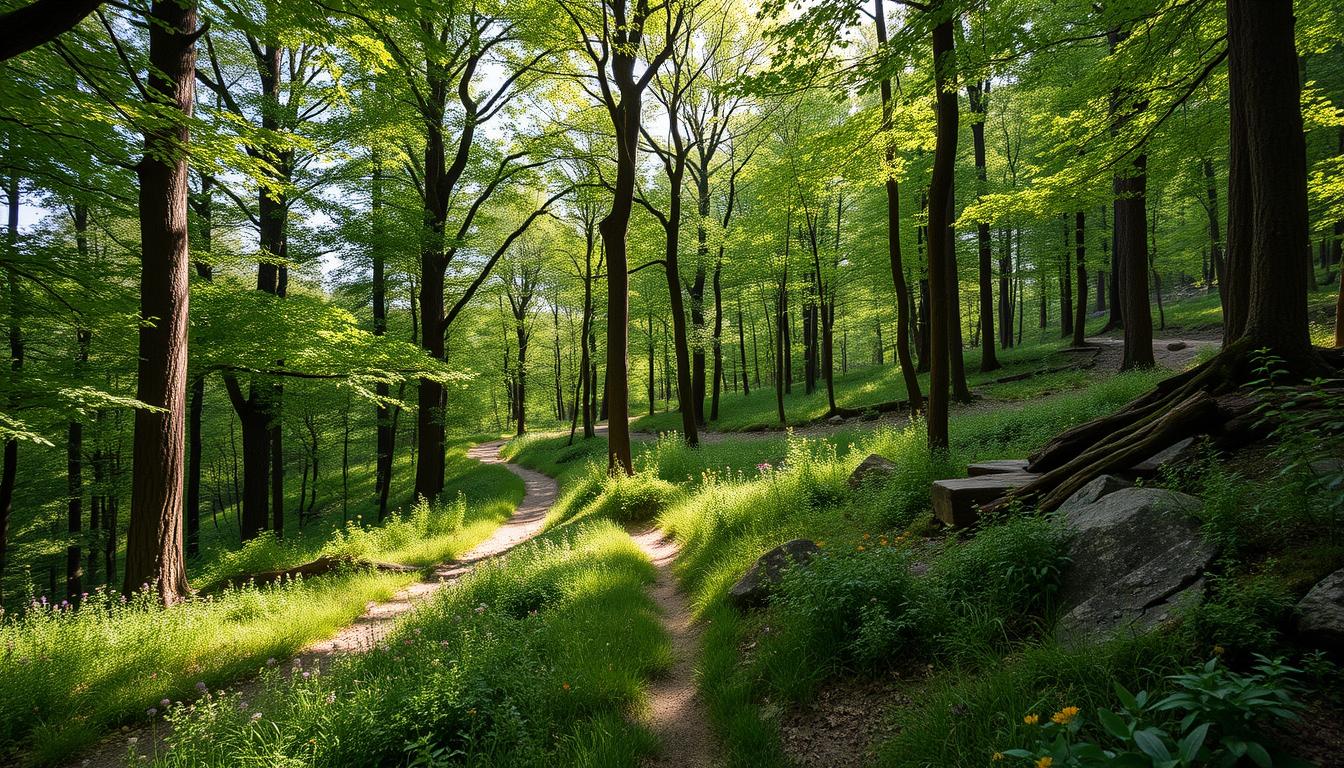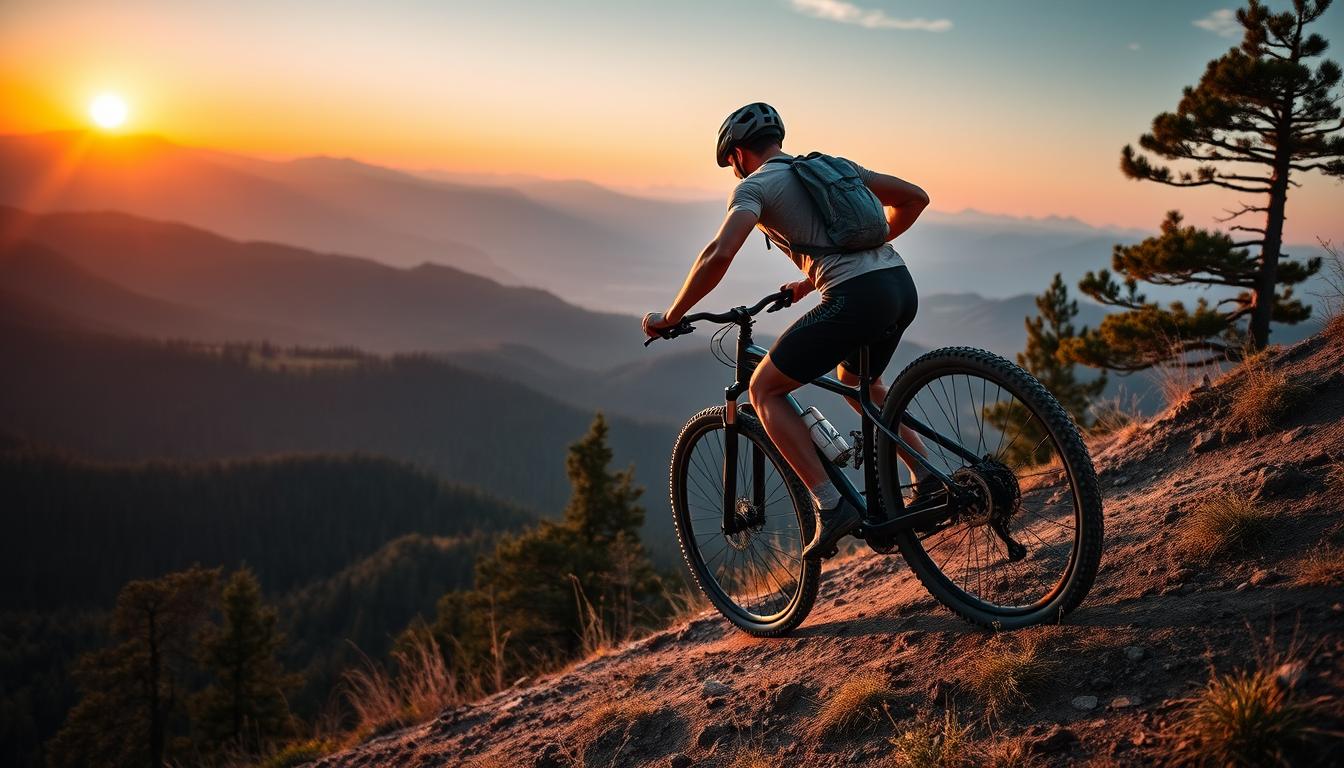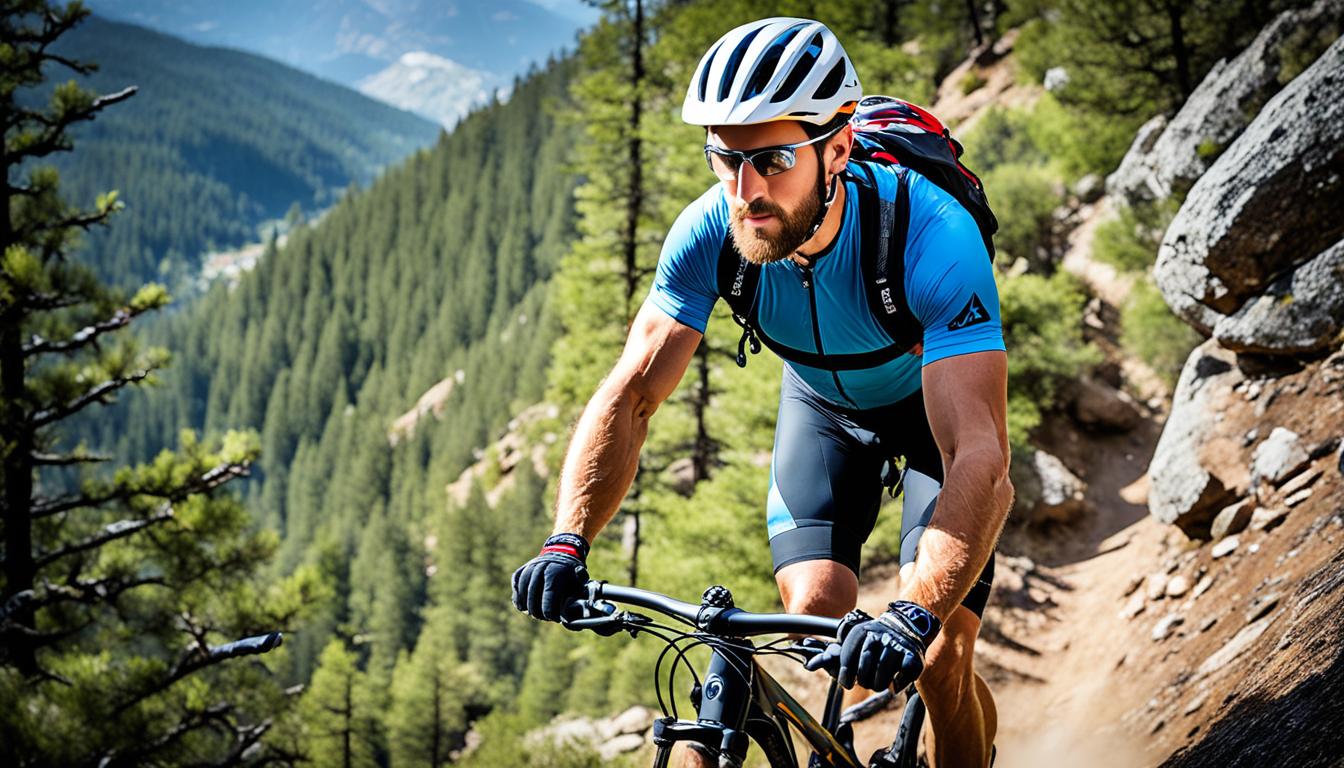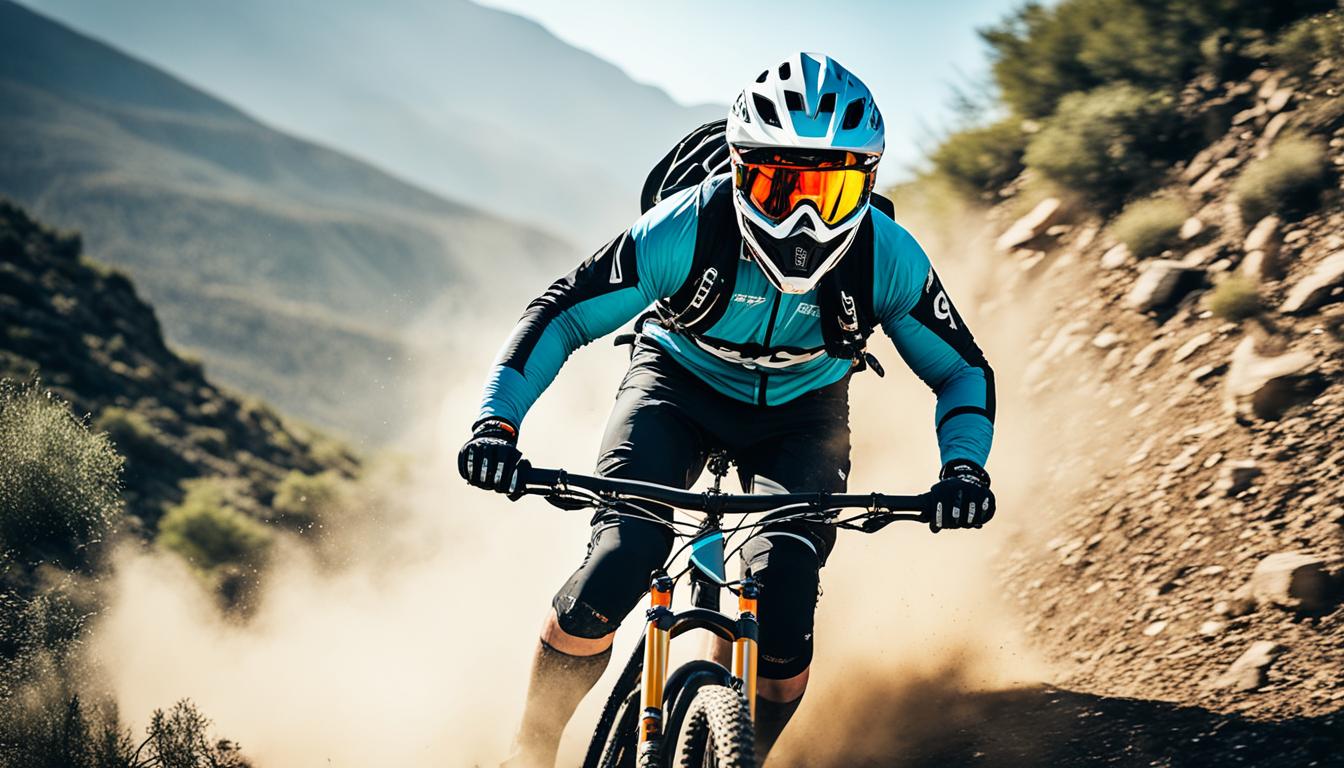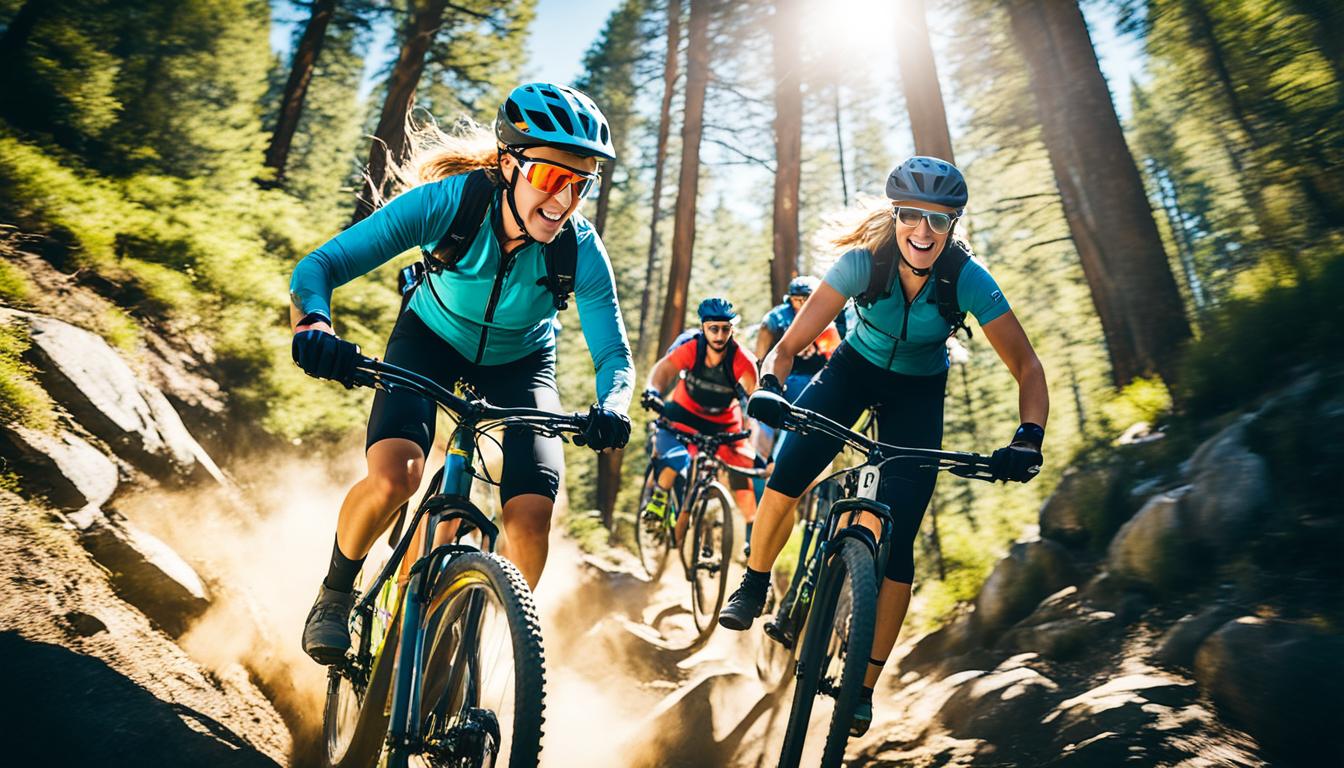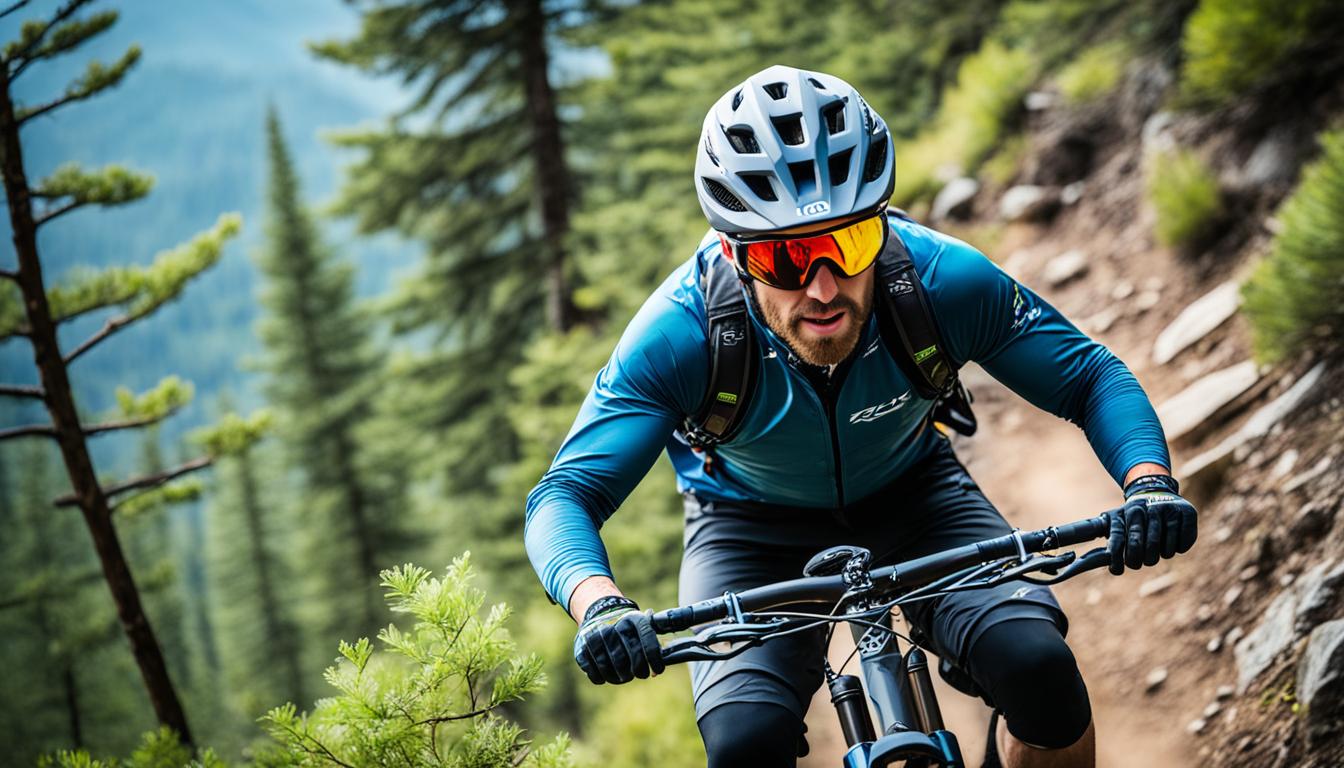Enduro mountain biking combines endurance with technical skills, attracting cyclists at every level. Whether starting or a pro, mastering this sport’s details is key. The races last 3 to 4 hours, covering distances of 20 to 60 km. They include elevation gains from 800 to 2500 metres. This guide offers vital tips for both beginners and experts. It covers gear, riding techniques, and more. Follow our advice to conquer trails confidently.
Introduction to Enduro Mountain Biking
Enduro mountain biking is popular among cyclists who love endurance and technical challenges. This introduction to enduro biking shows what makes it special. It mixes timed downhills with untimed uphills. This mix lets riders prove their speed and skill.
The history of enduro started in the early 2000s in France. It began as a unique race type. The first Enduro World Series began in 2008, setting up worldwide events. Since then, enduro biking has become hugely popular. Events have grown by over 600% in five years. In 2020, there were 4,000 events, with 25,000 riders joining in.
The enduro community loves tackling different landscapes. Riders at all levels enjoy the climbs and drops. Enduro mountain biking offers fun for newbies and experts alike. Conquering technical parts while managing your stamina is thrilling. It’s why enduro biking is a top choice for many.
Types of Mountain Biking
Mountain biking comes in several styles, each suiting different tastes and abilities. There are main types like cross-country, enduro, and downhill biking. Each type offers unique challenges and needs specific gear.
Cross-country mountain biking is a good starting point for newbies. It’s all about endurance and quickness over a mix of terrains. The trails mainly include singletracks and well-kept paths. Bikes for cross-country have 80-120mm suspension travel. This helps riders deal with bumps but keep riding efficiently. Most racers prefer bikes with 29-inch wheels, as they roll faster once you pick up speed.
As bikers get better, they often try enduro mountain biking. This style mixes uphill climbs with technical descents. It’s great for those who love a challenge. Enduro bikes have 150-170mm of suspension travel. This makes the ride comfortable and controlled on tough trails. Their special design improves handling, perfect for all sorts of ground.
Downhill biking focuses purely on descending steep and rough trails. It needs particular skills and gear due to the high speeds and obstacles. Downhill bikes have heavy-duty suspension, often 200mm or more, to handle shocks and keep the ride stable. These bikes are built tough, usually weighing around 18 kg. They’re designed to excel in steep, tricky descents.
| Type of Mountain Biking | Suspension Travel | Key Features |
|---|---|---|
| Cross-Country | 80-120mm | Focus on speed and endurance, typically 29” wheels |
| Enduro | 150-170mm | Combination of climbing and technical descents, progressive geometry |
| Downhill | 200mm+ | Designed for steep descents, heavy and durable |
Essential Gear for Enduro Mountain Biking
It’s key to have the right enduro biking gear for good performance and safety. This section highlights the best mountain bike and protective gear. These choices can make your rides much better.
Choosing the Right Bike
When choosing a mountain bike, several factors matter. Deciding between a full-suspension or hardtail bike affects how you handle rough tracks. Bikes like the Nukeproof Mega, which are full-suspension, offer more comfort and control on tricky trails.
Wheel size matters too, with bigger wheels making it easier to go over obstacles. The bike’s frame, made from aluminium or carbon fibre, also affects weight and durability. These decisions will influence how much you enjoy biking and for how long.
Protective Gear Recommendations
The importance of protective gear for cycling can’t be emphasized enough. Full-face helmets offer top-notch safety on difficult descents for enduro riders. Helmets with MIPS technology, like the Giro Manifest, are great for reducing impact forces, making rides safer. Also, knee pads are crucial for protection against injuries. Options such as the Fox Enduro Sleeves are comfortable and don’t slip during rides.
Gloves are essential for a good grip and reducing hand vibes during rides, with full-finger types offering more protection. Jerseys like those from Kaden Apparel have fabrics that wick away sweat, keeping you dry on long rides. And don’t forget padded shorts or liners, like the Terry Prima Bella Shorts, to prevent chafing. Lastly, the right shoes with sticky soles improve pedal grip, ensuring a better riding experience.
Check out the complete gear guide here for more detailed advice. Getting ready properly makes for much more fun and safe cycling.
Enduro Mountain Biking Tips for Beginners
Starting out in enduro mountain biking is thrilling yet challenging. Mastering the correct techniques is key. This guide offers essential tips for beginners to help them take on trails confidently.
Finding Suitable Trails
Choosing the right trails is essential for newbies. Opt for ones marked as beginner-friendly. These paths have gentle slopes and fewer obstacles. They let new riders get used to biking without getting overwhelmed. Apps like Komoot are great for finding these trails. They provide important details about the trail type and how hard they are.
Click here for top mountain biking destinations you need to ride!
Building Confidence on the Bike
Gaining confidence takes time and regular biking. Begin with easier trails to get comfortable. Learning how to turn corners, brake, and hold your body right helps you stay balanced. Slowly try out harder paths with things like small jumps and rocks to improve your skills. Remember, getting better comes with practice. Focus on the fun of biking and worry less about making mistakes.
| Aspect | Beginner Tips | Benefits |
|---|---|---|
| Trail Selection | Choose easy-to-navigate trails | Minimises overwhelm, enhances enjoyment |
| Practice Techniques | Focus on cornering and braking | Grows skill level and control |
| Progress Gradually | Take on slightly tougher trails | Builds confidence and enjoyment |
| Use Navigation Tools | Utilise apps for finding trails | Efficiently discover new routes |
Advanced Enduro Mountain Biking Tips for Pros
For riders aiming to boost their performance, there are key enduro tips. These focus on endurance and technical skills. They lay the groundwork for competitive success.
Improving Endurance for Races
Riding long distances regularly at moderate intensity is key for race prep. Endurance training for biking boosts stamina and fitness. Adding intervals with tough climbs and descents helps improve fitness and skill when tired. Gym training with functional strength exercises boosts performance and endurance.
Technical Skills to Master
Achieving technical skills is crucial for enduro mountain biking success. It’s important to practice basics like cornering, braking, and keeping balance. Moving up to advanced techniques is next. Chainless runs can teach the importance of smooth riding and effective speed keeping. Reading trails and choosing the best paths enhance control over varied terrains.
Practicing in different environments, like urban areas with steps and curbs, helps focus on certain skills. This increases confidence and helps tackle challenging trails better.
| Training Activity | Benefits |
|---|---|
| Pump Tracks | Improves skills and fitness; one hour offers great training value. |
| Timed Downhill Runs | Makes riding smoother and improves line choice on technical trails. |
| Interval Laps | Increases fitness and sharpens riding skills when fatigued. |
| Gravel Riding | Keeps heart rate zones targeted, improving balance and skill on simpler trails. |
| Mental Focus Techniques | Improves mental readiness and decision-making while riding. |
| Bike Handling Skills | Essential for enduro trails mastery; includes climbing and obstacle navigation. |
Focusing on both endurance and technical skills prepares riders for higher competition levels. For extra tips on mountain biking techniques, you can check out additional resources.
Regular practice and exploring different riding settings are crucial for mastering advanced skills. This approach enhances riders’ enduro performance significantly.
Training and Preparation for Enduro Racing
To get ready for enduro racing, riders need a plan that covers strength training, building skills, and eating right. A well-designed training plan is critical for doing well in this thrilling sport. It’s important to work out in the gym to build the muscles needed for racing’s challenges. Cyclists should aim for strength workouts two to three times a week in the off-season. They should focus on exercises like squats and deadlifts that build core strength and stamina.
Strength Training in the Gym
Strength training should last 45 to 60 minutes and target the whole body to improve muscle power and tone. Adding high-intensity interval training twice a week can greatly improve fitness. This mimics the intense effort required during races. These workouts help cyclists build the endurance they need for enduro racing’s varied terrains.
Nutrition and Hydration Strategies
Nutrition is key for mountain bikers, especially to keep energy up while riding. Riders should eat energy gels or bars every 30-40 minutes during rides. Drinking enough water before, during, and after rides is essential for staying hydrated. Making training fun is important for sticking to a schedule and getting ready for races. A comprehensive training approach covering strength, skills, and nutrition can help racers perform their best.
Read this if you want to know What Are the Best Enduro Mountain Bikes for Beginners.
FAQ
What is enduro mountain biking?
Enduro mountain biking mixes endurance with technical skills. It features climbs and descents across different terrains. Originally a competition, it’s now a loved hobby for many.
What should I look for when choosing a bike for enduro mountain biking?
Choose a bike by looking at the type, wheel size, and frame material. The Nukeproof Mega is a well-liked model.
What protective gear is essential for enduro riders?
Essential gear includes a fitting helmet, knee pads, gloves, and goggles. Quality gear boosts safety and comfort.
How can beginners find suitable trails for enduro biking?
Beginners should pick trails that match their skills. Start with easy paths to slowly face more challenge. This builds confidence and skills.
What tips can help new riders build confidence on their bike?
Build confidence by starting on easy trails. Move to harder features with time. Focus on the journey of learning.
What are some advanced tips for improving endurance in enduro racing?
Improve endurance with long rides at a steady pace. Add strength training for better performance.
What technical skills should pros master for enduro biking?
Pros should refine cornering, dropping, and handling technical sections. Practice in different conditions to improve.
What type of strength training is beneficial for enduro racing?
Strength exercises like squats, deadlifts, and lunges build the stamina needed for enduro racing.
How important is nutrition and hydration for enduro bikers?
Energy is key; eat something every 30-40 minutes and drink plenty. This keeps performance at its best during rides.
